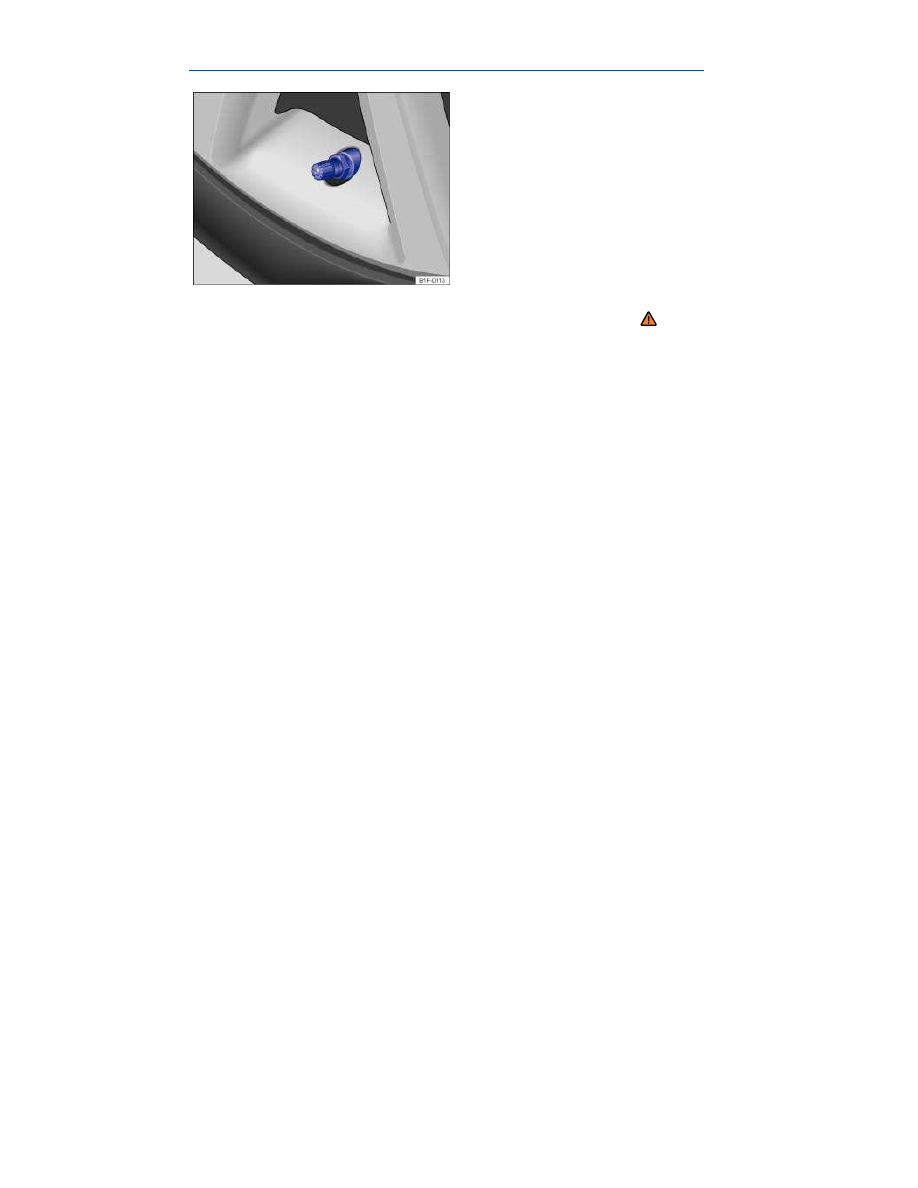Volkswagen EOS (2015 year). Instruction - part 13

Tire Pressure Monitoring System (TPMS)
Fig. 109 The Tire Pressure Monitoring system (TPMS) uses a pressure sensor in each read wheel.
Please first read and note the introductory information and heed the WARNINGS
The Tire Pressure Monitoring System uses a pressure sensor in each wheel. Signals from the sensors
are transmitted to the TPMS.
⇒
fig. 109
.
The TPMS checks the tire pressure of all 4 tires while you are driving and warns if there is a loss of
pressure while the vehicle is moving. Pressure loss that is 25% or more of the benchmark value
programmed into the system is signaled by the indicator light (telltale) described above, by acoustic
warnings, and by text messages in the instrument cluster display.
If you mount tires of a different size than the factory installed tires, an authorized Volkswagen dealer or
an authorized Volkswagen Service Facility can adjust the benchmark TPMS tire pressure to match the
new tires. Without this adjustment, TPMS may not work correctly or at all.
The tire pressure recommended for the tires originally installed on the vehicle is on a sticker on the
driver door jamb
⇒ Tire inflation pressure ⇒
fig. 105
.
Each tire, including the spare (if provided), should be checked monthly when cold and inflated to the
inflation pressure recommended by the vehicle manufacturer on the vehicle placard or tire inflation
pressure label. (If your vehicle has tires of a different size than the size indicated on the vehicle
placard or tire inflation pressure label, you should determine the proper tire inflation pressure for those
tires.)
As an added safety feature, your vehicle has been equipped with a Tire Pressure Monitoring System
(TPMS) that illuminates a low tire pressure telltale when one or more of your tires is significantly
underinflated. Accordingly, when the low tire pressure telltale illuminates, you should stop and check
your tires as soon as possible, and inflate them to the proper pressure. Driving on a significantly
underinflated tire causes the tire to overheat and can lead to tire failure. Underinflated tires also
reduce fuel efficiency and tire tread life, and may affect the vehicle's handling and stopping ability.
Please note that the TPMS is not a substitute for proper tire maintenance, and it is the driver's
responsibility to maintain correct tire pressure, even if underinflated tires have not reached the level to
trigger illumination of the TPMS low tire pressure telltale.
Your vehicle has also been equipped with a TPMS malfunction indicator to indicate when the system
is not operating properly. The TPMS malfunction indicator is combined with the low tire pressure
telltale. When the system detects a malfunction, the telltale will flash for approximately 1 minute and
then remain continuously illuminated. This sequence will continue upon subsequent vehicle start-ups
as long as the malfunction exists.
When the malfunction indicator is illuminated, the system may not be able to detect or signal low tire
pressure as intended. TPMS malfunctions may occur for a variety of reasons, including the installation
of replacement or alternate tires or wheels on the vehicle that prevent the TPMS from functioning
properly. Always check the TPMS malfunction telltale after replacing one or more tires or wheels on